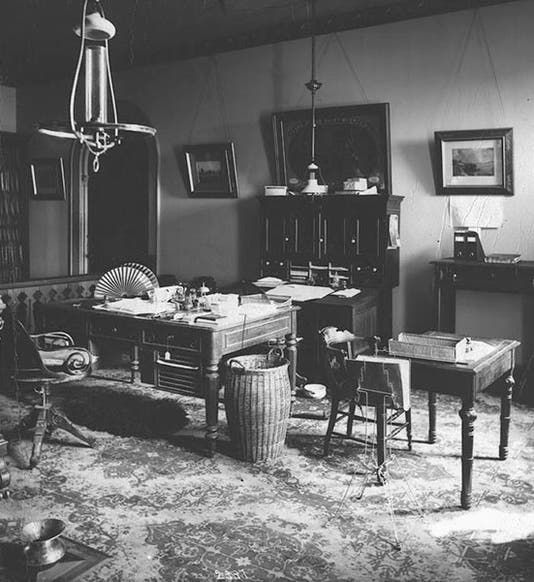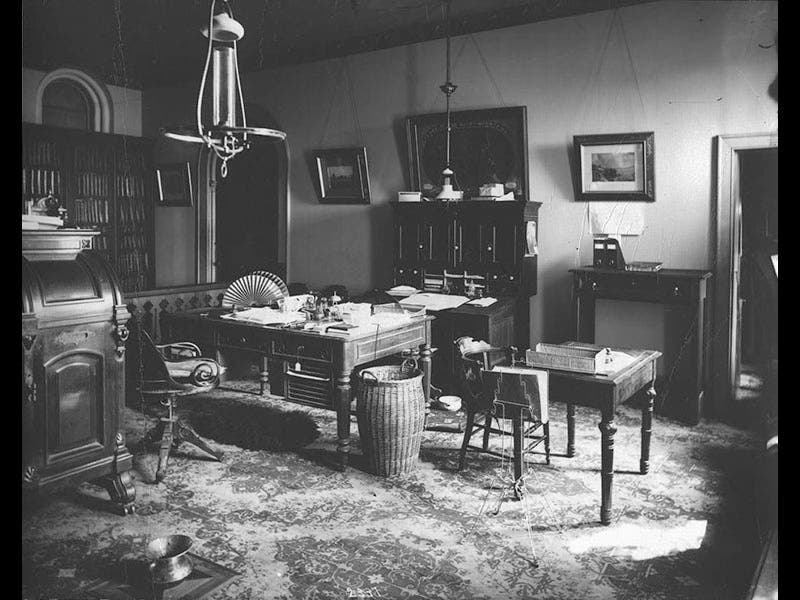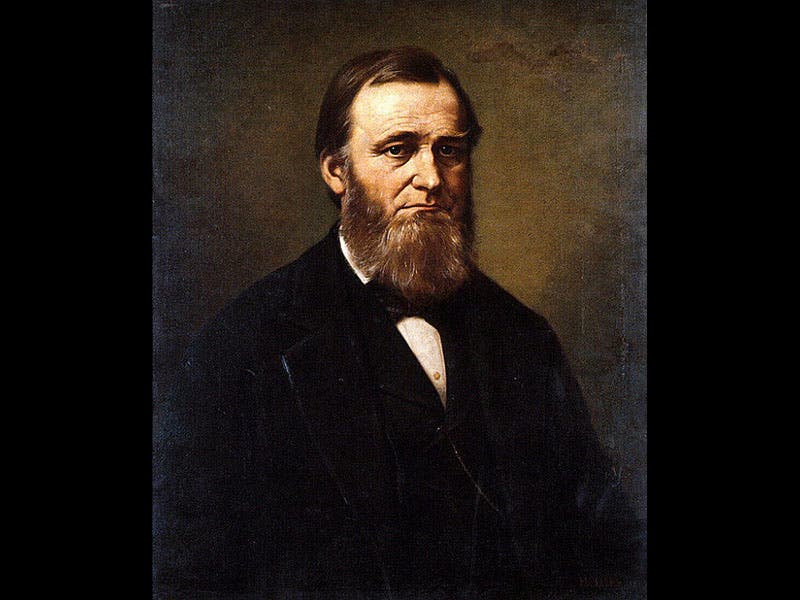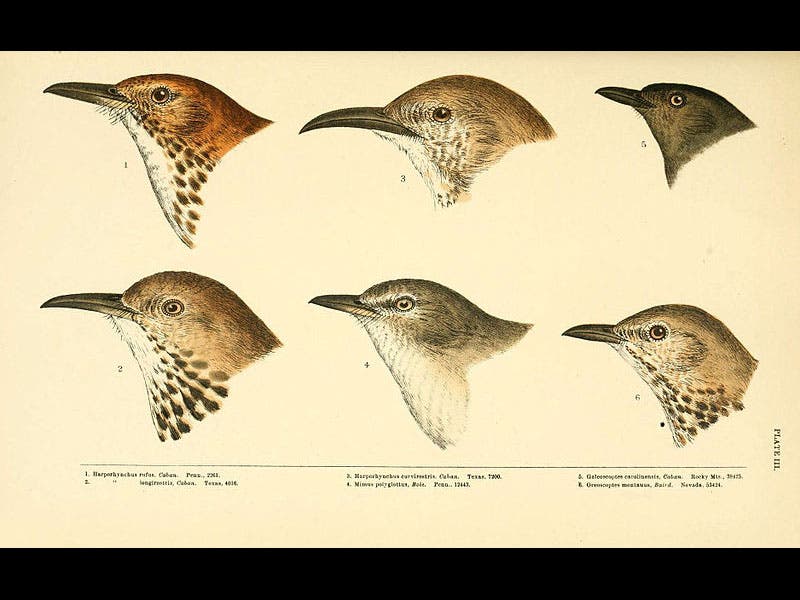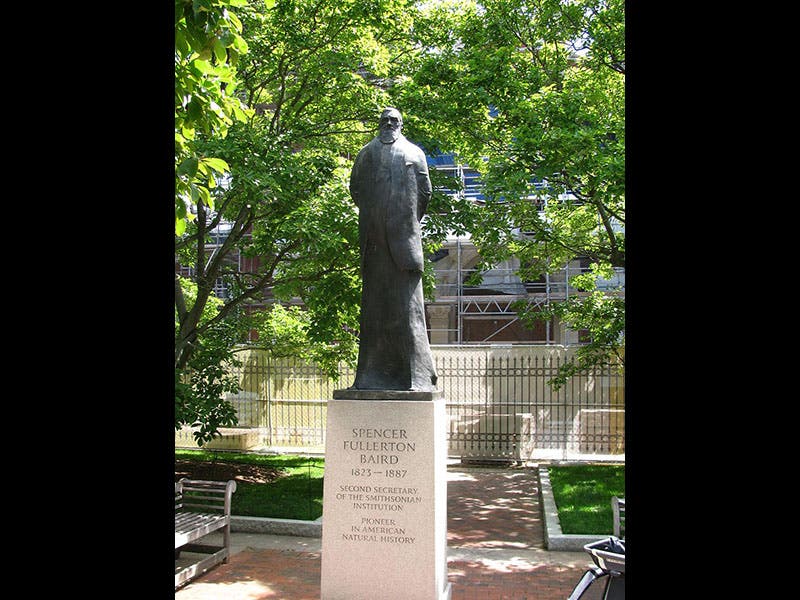Scientist of the Day - Spencer Baird
Spencer Fullerton Baird, an American ornithologist, was born Feb. 3, 1823. Baird was probably the most influential naturalist in the country in mid-19th century, primarily because of his role as Assistant Secretary of the Smithsonian Institution until 1878, and then as Secretary (the head man). We see his secretarial office above, with a state-of-the-art Wooton desk at the extreme left (first image). Baird was also an excellent ornithologist; many of the expeditions to the West in the 1850s turned their birds, and often their mammals, over to Baird for description and publication. We have a number of Baird publications in our collection; the six bird heads above are from his History of North American Birds (1874).
Baird was also the benevolent father figure to the Megatherium Club, the band of young naturalists who lived, worked, and partied in the Smithsonian building in the late 1850s (fourth image); he tolerated and encouraged their activities, defending them to his boss, Joseph Henry, who found them a nuisance. Many bird and mammal species were named after Baird, including Baird’s flycatcher (fifth image), which was named in Baird’s honor by William Gamble (who reserved his finest bird, Gambel’s quail, for himself). There is a portrait of Baird in the National Portrait Gallery in Washington (second image). And there is a statue of Baird in front of one of the Smithsonian buildings. We find its appearance quite curious, and can only assume that the extremely sloped shoulders are effective in helping the pigeons slide off (sixth image).
Dr. William B. Ashworth, Jr., Consultant for the History of Science, Linda Hall Library and Associate Professor, Department of History, University of Missouri-Kansas City. Comments or corrections are welcome; please direct to ashworthw@umkc.edu.

